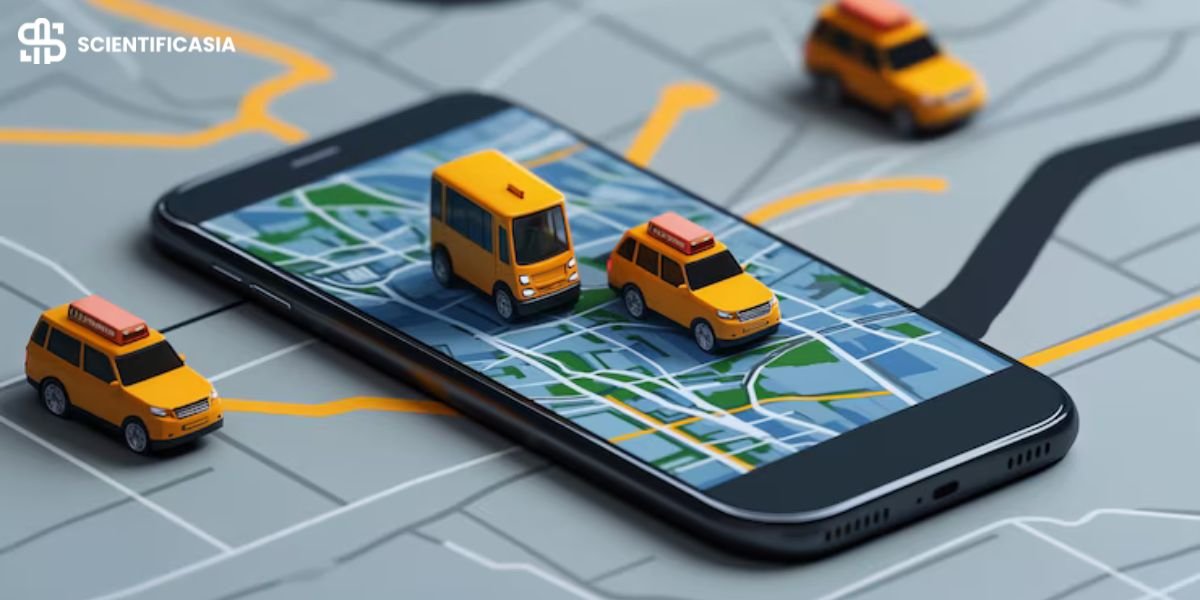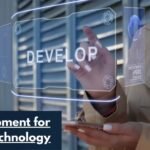Cities around the world are facing a significant issue: excessive traffic congestion. Every year, commuters waste a considerable amount of time stuck in traffic jams. This post will show new ways to resolve this issue and make travel easier for everyone.
Continue reading to learn how!
Innovative Strategies to Combat Urban Congestion
Revolutionizing traffic light management with AI can optimize traffic flow. Implementing congestion pricing systems encourages the use of alternative routes and carpooling.
Revolutionizing traffic light management with AI
Using AI to manage traffic lights is changing how cities handle road congestion. This technology improves traffic flow by adjusting lights in real time. It looks at how many cars are on the road and changes green and red lights to reduce waiting times. As part of broader transportation solutions, smart traffic signals help cities improve mobility without major infrastructure changes.
This smart system also cuts down on car pollution because there’s less idling at red lights. In New York City, similar tech helped lower travel times by 10%. It shows that smarter traffic light management can make a big difference in our daily commutes.
Implementing congestion pricing systems
Cities are trying congestion pricing to cut down traffic jams. This plan makes drivers pay during busy hours or in crowded areas. The aim is to encourage people to use less crowded routes or public transit instead of driving during peak times.
Places like New York City are looking into this idea to manage their streets better and make travel smoother for everyone.
New York City sees congestion pricing as a tool for reducing traffic and helping the environment by cutting down on air pollution.
This system also funds public transport upgrades, making buses and trains better options for getting around. By charging more at busy times, cities hope fewer cars will clog the roads, leading to faster trips for everyone.
Encouraging alternative routes and carpooling
After discussing congestion pricing systems, we see how important it is to find other ways to reduce traffic. Encouraging alternative routes and carpooling can greatly help.
- Cities can map out less crowded routes. These routes can help drivers avoid busy roads.
- Apps show real-time traffic data. Drivers use them to find the best way to go.
- Governments offer incentives for carpooling. The outcome could mean lower tolls on roads for cars with more people.
- Companies set up carpool programs for their workers. This helps cut down on the number of cars on the road during rush hour.
- Local ads promote the benefits of carpooling. They talk about saving money and reducing pollution.
- Schools encourage parents to take turns driving their kids. This technique reduces traffic near schools in the morning and afternoon.
- Public campaigns support using bikes or walking for short trips instead of driving.
- Websites and apps match people who want to carpool together based on their schedules and routes.
Using these strategies, cities aim to lower the number of cars on the road and make travel smoother for everyone
Enhancing Public Transit Systems
Enhancing public transit involves expanding bus coverage and services, investing in light rail networks, and developing on-demand transit solutions. It also includes strategies to improve urban mobility and encourage the use of sustainable transportation methods.
Expanding bus coverage and services
Expanding bus coverage and services means better accessibility for everyone. Here’s how this approach can make a difference:
- There should be more frequent bus schedules to cut down on passenger waiting times.
- Extended operational hours allowing people to travel at their convenience.
- We are introducing more routes to connect underserved areas and improve connectivity.
- We have enhanced accessibility features on buses to accommodate individuals with disabilities.
- We are upgrading bus infrastructure, such as stops and shelters, for improved comfort and safety.
- Introduction of modern technologies for real-time tracking of buses, providing accurate arrival times to passengers.
- We integrate fare payment systems to ensure smooth transitions between various public transport modes.
Investing in light rail networks
Investing in light rail networks is a pivotal strategy for enhancing urban transportation. Cities like Los Angeles and Salt Lake City have experienced success with their light rail systems, alleviating traffic congestion and providing convenient transit options.
These networks improve public transit accessibility, offering commuters a dependable and eco-friendly alternative to driving. Moreover, they contribute to sustainable urban planning by reducing carbon emissions and promoting walkable communities.
For example, the introduction of new light rail lines in Seattle led to a 4% decrease in vehicle miles traveled within the city.
Expanding these systems can notably enhance mobility options for residents while alleviating traffic congestion on roadways. Research indicates that every dollar invested in public transportation generates approximately $4 in economic returns, highlighting the effectiveness of such endeavors.
Developing on-demand transit solutions
Developing on-demand transit solutions involves creating flexible and responsive transportation options. This can include ride-hailing services, shuttle buses, or microtransit that adapts to passengers’ needs and travel patterns.
For instance, some cities have implemented on-demand transit apps that allow users to request a pick-up and drop-off at their desired locations, offering a convenient alternative to fixed bus routes.
These innovations aim to provide efficient, personalized mobility while reducing reliance on personal vehicles and easing congestion in urban areas.
Another example is the integration of on-demand ridesharing into public transit systems, enabling commuters to book shared rides for first- or last-mile connections to existing transport infrastructure.
By leveraging technology and data-driven insights, these solutions optimize service levels based on demand, helping cities offer cost-effective and accessible transportation options to residents while addressing traffic congestion issues.
This approach aligns with the growing trend toward sustainable urban mobility by promoting shared transportation resources rather than individual car ownership. In turn, it contributes to reducing greenhouse gas emissions associated with increased private vehicle usage.
Sustainable Urban Mobility Approaches
Improving sustainable urban mobility includes promoting walkable and bike-friendly infrastructure, as well as reducing reliance on personal vehicles. To learn more about these approaches, head to our blog for insightful reading.
Promoting walkable and bike-friendly infrastructure
Cities can make it easier for people to walk and ride bikes. Building more sidewalks and bike lanes helps create safer spaces for pedestrians and cyclists. Adding these infrastructures reduces traffic congestion, promotes physical activity, and cuts down on greenhouse gas emissions.
For instance, studies have shown that adding bike lanes can increase cycling by up to 48%. In Copenhagen, Denmark, where biking infrastructure is robust, around 62% of residents use bicycles as their primary mode of transportation.
Encouraging walking and biking can also have economic benefits. A study found that when cities invest in pedestrian and cycling infrastructure, there’s a return on investment of up to $24 for every dollar spent due to the increase in retail sales from foot traffic.
This approach can enhance public health, too – cities with good walking paths tend to have lower rates of obesity. Simple measures like well-maintained sidewalks or designated areas for walkers and bikers can help create healthier urban environments while reducing reliance on cars.
Reducing reliance on personal vehicles
Promoting walkable and bike-friendly infrastructure sets the stage for reducing reliance on personal vehicles. Providing pedestrian-friendly paths, designated bike lanes, and secure bicycle parking facilities encourages people to choose these alternatives.
For example, in cities with extensive biking infrastructure like Copenhagen, Denmark, over 60% of residents regularly commute by bicycle due to safe and easily accessible biking lanes.
Offering convenient walking paths and cycling routes not just reduces traffic congestion but also fosters healthier lifestyles and cuts greenhouse gas emissions. These initiatives are essential components in curbing urban congestion while encouraging sustainable mobility options within communities.
In addition, the incorporation of public transit systems complements efforts in reducing personal vehicle dependency. Developing efficient bus networks with increased coverage ensures that individuals have practical transportation choices beyond private cars.
This was effectively demonstrated when New York City expanded its bus services to underserved areas, resulting in a significant decrease in single-occupancy car trips across various neighborhoods.
By offering reliable alternative options such as buses or light rail trains along with modernized walkable streetscapes, it becomes possible for individuals to transition away from relying solely on their vehicles for daily commuting needs.
Leveraging Technology and Data
Using analytics to optimize traffic flow and introducing smart parking systems can revolutionize urban transportation. Read more for innovative solutions to combat congestion.
Using analytics to optimize traffic flow
Data analytics plays a crucial role in optimizing traffic flow. By analyzing real-time traffic patterns and historical data, cities can make informed decisions to reduce congestion.
These insights enable authorities to adjust signal timings, redirect traffic, and identify areas needing infrastructure improvements. For example, Los Angeles reduced travel times by 12% and delays by 37% through its adaptive signal control technology.
Employing analytics doesn’t just ease congestion but also improves air quality and lowers fuel consumption.
As we move on to the next section titled “Introducing smart parking systems,” it is important to note that leveraging technology continues to transform urban mobility.
Introducing smart parking systems
Smart parking systems utilise technology to improve the efficiency and convenience of finding parking spaces in urban areas. These systems, which often integrate sensors and real-time data, help drivers locate available parking spots more quickly, reducing traffic congestion and emissions from vehicles circling in search of parking.
By integrating with mobile apps and navigation tools, smart parking systems can provide users with information on nearby available parking options and allow for cashless payments, streamlining the overall experience.
Furthermore, smart parking systems contribute to optimising the use of limited urban space by guiding vehicles directly to open spots. They also assist cities in gathering valuable data on usage patterns that can inform infrastructure planning and help alleviate congestion hotspots.
Ultimately, this technology plays a vital role in creating smoother traffic flows while enhancing the overall urban mobility experience for residents and visitors alike.
Conclusion
In the ever-evolving transportation realm, we must explore beyond traditional solutions to address the congestion crisis. Revolutionizing traffic light management and embracing AI can optimize traffic flow in urban areas.
By investing in sustainable mobility options and leveraging technology, we can pave the way for a future with enhanced urban mobility. Embracing innovative strategies and enhancing public transit systems are crucial steps towards combating congestion and creating more efficient transportation networks for tomorrow.
With these advancements, we can unveil the secrets to reshaping our cities into smart, sustainable hubs of connectivity.
















